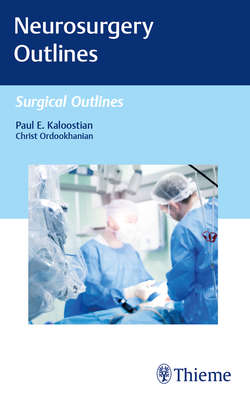Читать книгу Neurosurgery Outlines - Paul E. Kaloostian - Страница 88
На сайте Литреса книга снята с продажи.
Surgical Procedure for Anterior Transthoracic Decompression/Fusion
Оглавление1. Informed consent signed, preoperative labs normal, no Aspirin/Plavix/Coumadin/NSAIDs/Advil/Celebrex/Ibuprofen/Motrin/Naprosyn/Aleve/other anticoagulants and anti-inflammatory drugs for at least 2 weeks
2. Appropriate intubation and sedation and lines (if necessary) as per the anesthetist
3. Large bore (16–14 gauge) intravenous (IV) access for blood loss during operation
4. Patient placed in left/right lateral decubitus position with all pressure points padded (depending on whether left or right lateral thoracotomy will be performed)
5. Neuromonitoring may be required to monitor nerves (if necessary and indicated)
6. Intraoperative fluoroscopy used as deemed appropriate
Fig. 2.9 (a) Patient orientation for the anterolateral transthoracic approach to thoracic decompression and fusion. (b) Surgical steps for anterolateral transthoracic approach, from incision and retractor placement to muscular dissection, rib visualization, electrocautery, and rib resection. (c) Following initial thoracotomy, either retropleural or transpleural approaches are viable. This image demonstrates the next steps in a retropleural approach. (d) Intraoperative image of a lateral transthoracic approach to a thoracic vertebrectomy and fusion with instrumentation. (Source: Open lateral transthoracic approach. In: Fessler R, Sekhar L, eds. Atlas of Neurosurgical Techniques: Spine and Peripheral Nerves. 2nd ed. Thieme; 2016).
7. Time out is performed with agreement from everyone in the room for correct patient and correct surgery with consent signed
8. Make posterior incision starting from appropriate level of spine, curving down the line of the rib
9. Divide the latissimus and trapezius muscles:
a. Divide the rhomboids and both teres as well for T1–T4 exposure
10. Mobilize scapula from chest wall and elevate using scapula retractor
11. Enter chest through intercostal space or the bed of the rib at the level of vertebrae of interest:
a. Make incision in intercostal space to enter thoracic cavity
b. Resect proximal rib as bone graft will be used
c. Mobilize erector spinae superiorly and inferiorly, or divide it transversely at the level of intercostal incision
d. Retract ribs and scapula using Finochietto or Burford retractor
e. Retract the intercostal space
12. Expose the vertebrae of interest:
a. Mobilize superior and posterior hilum (T1–T4)
b. Mobilize the pulmonary ligament and hilar pleura
c. Divide the mediastinal pleura posterior to the hilum from the inferior pulmonary vein to just above the mainstem bronchus (T5–T8)
d. Displace the lung anteriorly and move it out of the way using wet lap pads
e. Open the mediastinal pleura anterior to the vertebral bodies vertically from the thoracic inlet to the level of the carina. Dissect and mobilize the mediastinal structures. Mobilize the azygos vein with tributaries and the esophagus using blunt and sharp dissection (right thoracotomy), or mobilize the descending thoracic aorta (left thoracotomy) (T1–T8)
f. Mobilize the thoracic duct anteriorly (T5–T8)
g. Retract diaphragm using sponge stick. Mobilize posterior attachments of diaphragm. Mobilize posterior mediastinal structures for anterior retraction (T9–T12)
13. Perform the decompression procedure over the desired segments based on preoperative imaging of levels that are compressed due to trauma:
a. Using Leksell rongeurs and hand-held high-speed air drill, resect the adjacent disk material immediately ventral to the posterior cortical bone of the vertebral bodies
b. Leave a thin shelf of bone immediately adjacent to posterior longitudinal ligament and dura intact:
i. This step avoids the cord falling ventrally, which can result in cord injury during the resection process
c. Remove adequate portion of subcortical bone, using high-speed air drill, across midline for decompression of ventral cord surface
d. Remove thin shelf of bone adjacent to posterior longitudinal ligament with rongeur
e. Control bone bleeding with bone wax
14. Perform posterior thoracic fusion with instrumentation (if necessary, as most often anterior approach is all that is needed):
a. Place and secure bone graft with cancellous screws to bridge the vertebra above and below the midpoint of the fracture, avoiding injury to vital structures
15. Achieve hemostasis
16. Drain the chest and inspect posterior mediastinum for lymph leak
17. If previously mobilized, reattach the diaphragm to the fascia of the posterior chest wall with sutures
18. Close muscle and skin incisions in appropriate fashion, often with placement of postoperative chest tube that can be removed after 2 to 3 days
